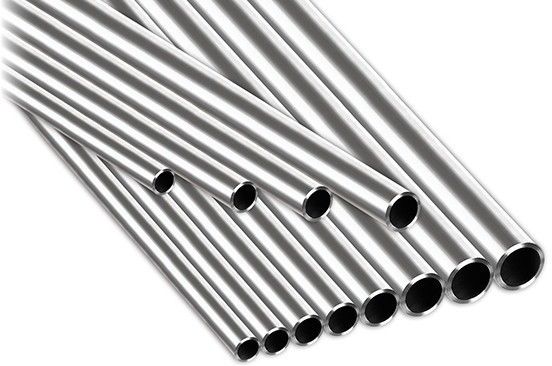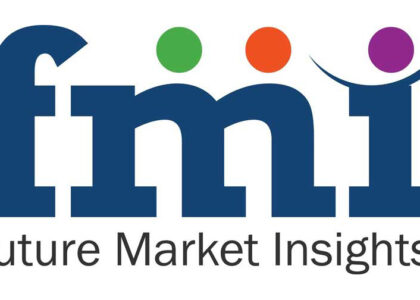
The global precision stainless steel market is poised for steady growth, with a projected valuation of US$ 3,754.29 million by 2033, up from US$ 2,488 million in 2023. The market is expected to grow at a CAGR of 4.2%, fueled by advancements in alloy development, automation, and sustainable manufacturing practices.
Renowned for its exceptional durability and resistance to corrosion, precision stainless steel finds widespread application in diverse industries such as automotive, aerospace, medical, and oil & gas. The consistent rise in demand for precision stainless steel is attributed to the escalating need for top-tier metals characterized by exceptional properties that can be customized to meet specific requirements across various applications.
Request for a Sample of this Research Report: https://www.futuremarketinsights.com/reports/sample/rep-gb-9833
Key Market Trends and Drivers:
- Innovation in Alloy Development: Manufacturers are heavily investing in research and development to create new grades of precision stainless steel with enhanced properties such as higher strength, improved formability, and increased corrosion resistance. This trend is driven by the need to cater to the specific requirements of diverse end-use industries, including automotive, aerospace, medical, and oil & gas.
- Automation and Robotics in Manufacturing: The increasing adoption of automation and robotics in manufacturing processes significantly boost productivity and ensure consistent quality in precision stainless steel components. Automation reduces human errors and operational costs, making manufacturing processes more efficient and cost-effective.
- Sustainable Manufacturing Practices: With growing environmental concerns, manufacturers are adopting sustainable practices such as using renewable energy sources, recycling waste materials, and reducing carbon emissions. These practices help reduce the environmental footprint, enhance the brand image, and meet the rising demand for sustainable products.
Industry Restraints:
- Volatility in Raw Material Prices: Fluctuations in the prices of raw materials like nickel, chromium, and molybdenum, which are essential components of stainless steel, can impact production costs and profit margins for manufacturers, posing a challenge to market growth.
- Intense Competition from Alternative Materials: Precision stainless steel faces competition from alternative materials like aluminum, carbon fiber, and composite materials, particularly in certain applications where weight reduction is critical. Manufacturers must continually innovate to maintain competitiveness.
- Trade Tariffs and Geopolitical Tensions: Trade disputes and geopolitical tensions can disrupt the supply chain and impose tariffs on stainless steel imports and exports, affecting market dynamics and profitability for manufacturers operating in global markets.
- Quality Control Challenges: Maintaining consistent quality and meeting stringent industry standards for precision stainless steel products can be challenging, especially with complex manufacturing processes. Any lapses in quality control can lead to rejections and reputational damage.
- Environmental Regulations and Compliance Costs: Compliance with environmental regulations, particularly in terms of emissions, waste disposal, and energy consumption, adds to operational costs for precision stainless steel manufacturers. Stricter regulations may require investments in eco-friendly technologies, impacting profitability.
- Cyclical Nature of End-Use Industries: End-use industries like automotive and construction are cyclical in nature, susceptible to economic downturns and fluctuations in consumer demand. This cyclicality can affect the demand for precision stainless steel products, leading to periods of slower growth or contraction.
Who is winning?
Top players of precision stainless steel contribute approximately 40-45% to the global market value. Some of the leading key players are
- Acerinox,
- Baoshan Iron & Steel Co.,
- AK Steel Corporation,
- Outokumpu Oyj,
- Jindal Stainless Group, and
- Aperam.
Key takeaways from the precision stainless steel market:
- The under 0.1mm category is expected to take up approximately 25% of the global precision stainless steel market. It is also expected to reach 800 million dollars by 2029
- With precision stainless steel being used for the manufacturing of seamless pipes and tubes, the automotive segment is said to have a strong foothold with a CAGR of 3.8%
- Precision stainless steel also has its use in the electronics and transportation industry. This guarantees a 2/5 th share value in the global market between 2022-2029
- East Asia is expected to overtake other regions and create an opportunity to reach 388.7 million dollars by 2029
- By 2029, South Asia is expected to expand by 1.4 times of current market value
Growing Demand for Stainless Steel in Automotive Industry to Trigger Growth
The precision stainless steel sector stands poised to reap significant advantages from its integration into the automotive manufacturing industry, driven by a growing demand for advanced high-strength steel (AHSS) characterized by exceptional formability and strain rates, which is anticipated to substantially boost market revenues. Key players in the global steel production arena have a strategic opportunity to channel investments into pioneering materials and manufacturing technologies, facilitating the introduction of a diverse range of innovative automotive steels. Major automotive manufacturers are actively engaged in incorporating advanced high-strength steel (AHSS), such as stainless steel foils, in their production processes to craft auto parts that are not only highly secure but also lightweight and cost-effective.
Seize the Opportunity: Get Report Now for a Thorough Report: https://www.futuremarketinsights.com/checkout/9833
Key Market Segmentation:
By Material Type:
- Below 0.1 mm
- 0.1 mm to 0.4 mm
By End User:
- Food Industry
- Automotive
- Pharmacy
- Construction
- Industrial
- Aerospace
By Region:
- North America
- Latin America
- Europe
- East Asia Cell
- South Asia & Pacific
- Middle East & Africa (MEA)
About Future Market Insights (FMI)
Future Market Insights, Inc. (ESOMAR certified, recipient of the Stevie Award, and a member of the Greater New York Chamber of Commerce) offers profound insights into the driving factors that are boosting demand in the market. FMI stands as the leading global provider of market intelligence, advisory services, consulting, and events for the Packaging, Food and Beverage, Consumer, Technology, Healthcare, Industrial, and Chemicals markets. With a vast team of over 400 analysts worldwide, FMI provides global, regional, and local expertise on diverse domains and industry trends across more than 110 countries.
Contact Us:
Future Market Insights Inc.
Christiana Corporate, 200 Continental Drive,
Suite 401, Newark, Delaware – 19713, USA
T: +1-845-579-5705
For Sales Enquiries: sales@futuremarketinsights.com
Website: https://www.futuremarketinsights.com
LinkedIn| Twitter| Blogs | YouTube

